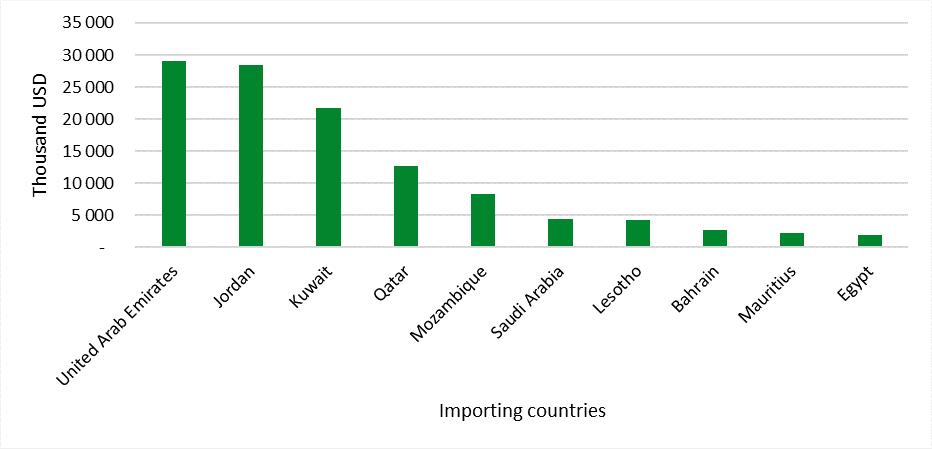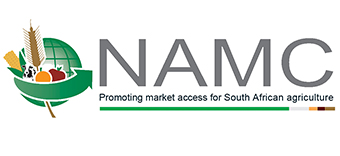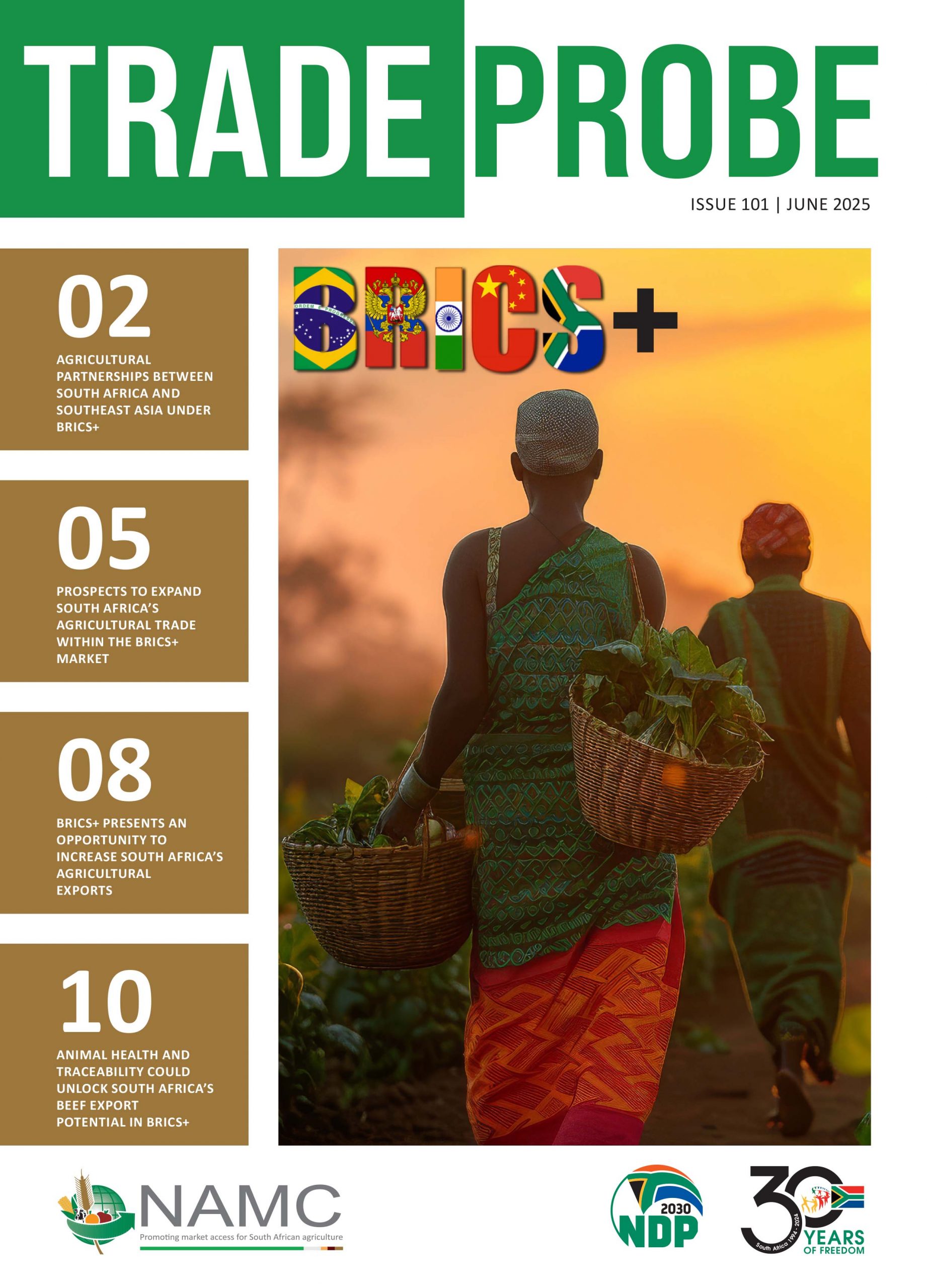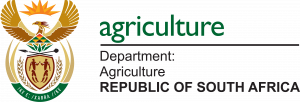ANIMAL HEALTH AND TRACEABILITY COULD UNLOCK SOUTH AFRICA’S BEEF EXPORT POTENTIAL IN BRICS+
By: Siphelele Ricardo Smith
Introduction
South Africa’s beef industry has a potential to become a competitive player in international trade. In 2024, South Africa’s beef exports experienced significant growth, with cumulative exports reaching 38,657 tonnes, a 30% increase from 29 718 tonnes in 2023 (RMIS, 2024). Despite this progress, the industry continues to face challenges, including disease outbreaks in provinces like Gauteng, KwaZulu-Natal and the Eastern Cape. Since 2021, South Africa has recorded a total of 207 Foot-and-Mouth Disease (FMD) outbreaks. As of March 2025, three new outbreaks were reported in KwaZulu-Natal, increasing the province’s total to 167 outbreaks. Out of 167 outbreaks, 149 were open and 18 were closed. The Eastern Cape has not reported any new outbreaks since September 2024 (DALRRD, 2025a). Recently, China has suspended beef imports from South Africa due to ongoing concerns over FMD outbreaks, posing a significant setback for the country’s beef exports.
Figure 1 shows the importing markets for South Africa’s beef exports in 2024, in value terms. Key export markets included Jordan, United Arab Emirates (UAE), Kuwait, Mozambique, Qatar, Lesotho, Saudi Arabia and Mauritius. Notably, three of the top 10 importers, UAE, Saudi Arabia, and Egypt are BRICS+ members, highlighting the importance of this bloc in South Africa’s beef trade. The BRICS+ markets offer a dynamic landscape for South Africa’s beef exports, driven by rising demand and shifting trade relations. In 2024, Saudi Arabia lifted a 20-year ban on South African meat products, indicating a renewed trade momentum (The DTIC, 2024). China, the world’s largest beef importer with total beef imports reaching USD 790.873 billion in 2024, is one of the markets with the greatest potential for South Africa’s beef exports (Trademap, 2025). However, to fully seize these opportunities, South Africa must address persistent animal health and traceability gaps that limit access to these markets. A coordinated national strategy focused on veterinary infrastructure, biosecurity, and digital traceability systems is essential to build global confidence in the country’s beef supply chain.

Figure 1: Importing markets for South Africa’s beef (HS: 0201) exports in 2024
Source: Trademap, 2025
Disease outbreaks in 2021 and 2022 resulted in a decline in the number of cattle slaughtered in 2023. In 2024, improved biosecurity measures contributed to a 3% increase in cattle slaughter, rising to 3.253 million head from 3.147 million in 2023 (DALRRD, 2025b). The Department of Agriculture, in collaboration with the Department of Science, Technology & Innovation and private sector partners, committed to contribute R10 million to the National Biosecurity Hub Programme. For markets like China, where South Africa competes with Brazil and Australia, aligning with World Organisation for Animal Health (WOAH) standards is critical to prevent disruptions. India’s high tariffs and non-tariff barriers restrict access. In India, stringent health certifications are essential to meet import requirements, despite cultural sensitivities around beef.
Reviving local animal vaccine production and increasing funding for veterinary services are critical to combat diseases such as Foot-and-Mouth Disease (FMD) and brucellosis. These interventions would boost exports, improve market access, and strengthen the resilience of the livestock sector to both environmental and disease-related shocks. Traceability is equally important, providing transparency that resonates with BRICS+ consumers. China’s market values verifiable supply chains to ensure safety and sustainability, while the UAE and Saudi Arabia demand Halaal-compliant, traceable products. South Africa’s traceability systems are evolving. In 2024, the Red Meat Industry Services (RMIS) launched a pilot phase of its Mobile Processing Units (MPUs), during which over 2,000 cattle were processed across various emerging farms and communal dip tank, improving small-scale farmers’ market access. The MPUs are designed to bring essential livestock services such as tagging, branding, dehorning, and vaccinations (RMIS, 2025). However, scaling up digital solutions like blockchain is essential to match competitors like Australia, which leverages advanced traceability to dominate China’s fresh beef sector.
Conclusion
South Africa’s beef industry can capitalize on the growing opportunities within BRICS+ markets by addressing critical challenges in animal health and traceability. Investments in biosecurity, local vaccine production, and digital traceability systems, such as blockchain, will ensure compliance with stringent international standards, like those of the World Organisation for Animal Health (WOAH) and the specific demands of markets like China, the UAE, and Saudi Arabia. Collaborative efforts across government, industry, and private sectors will position South Africa as a leader in high-quality beef exports. This coordinated approach will drive economic growth, enhance the resilience and global reputation of South Africa’s livestock sector.


